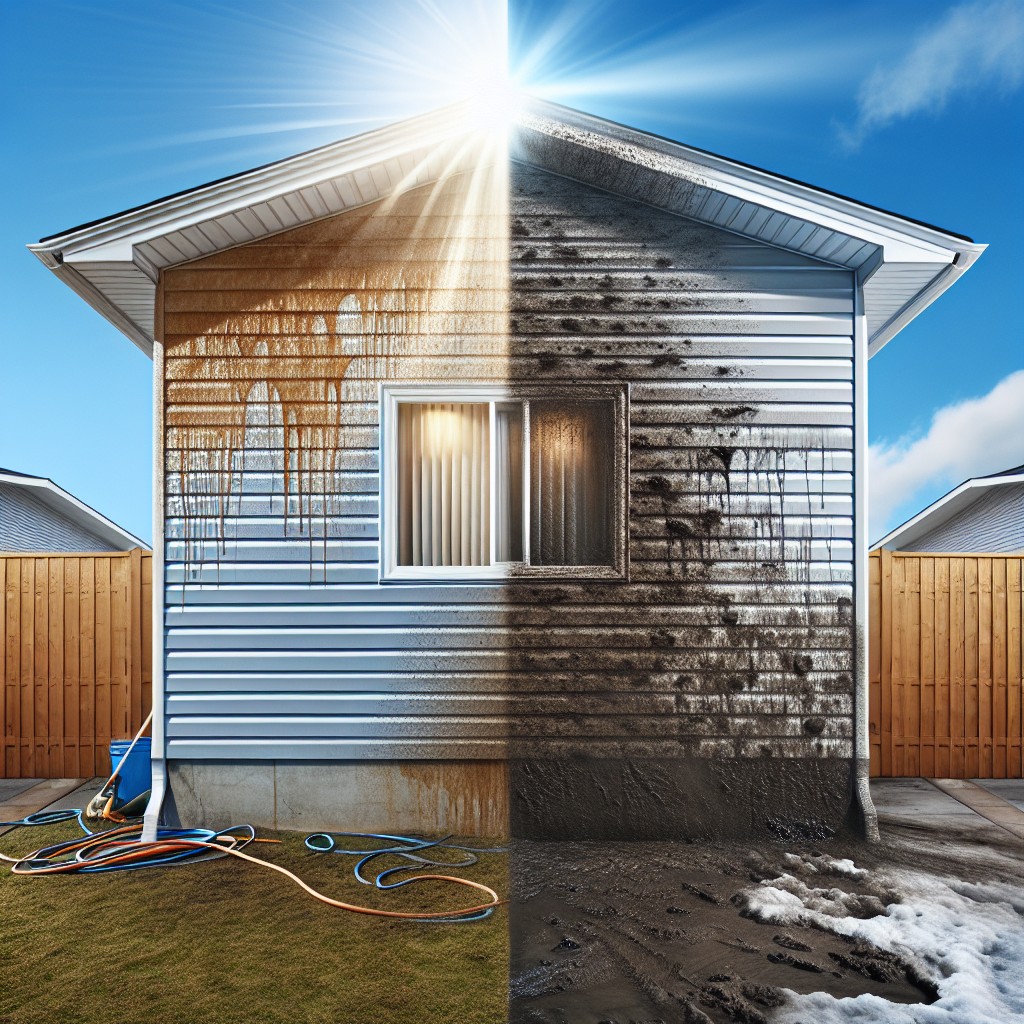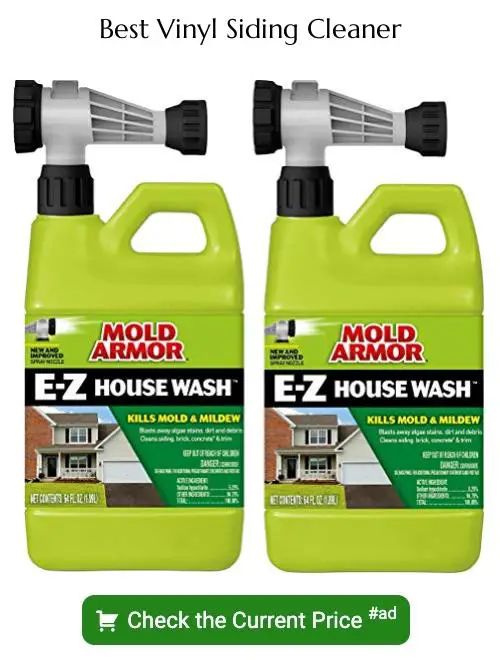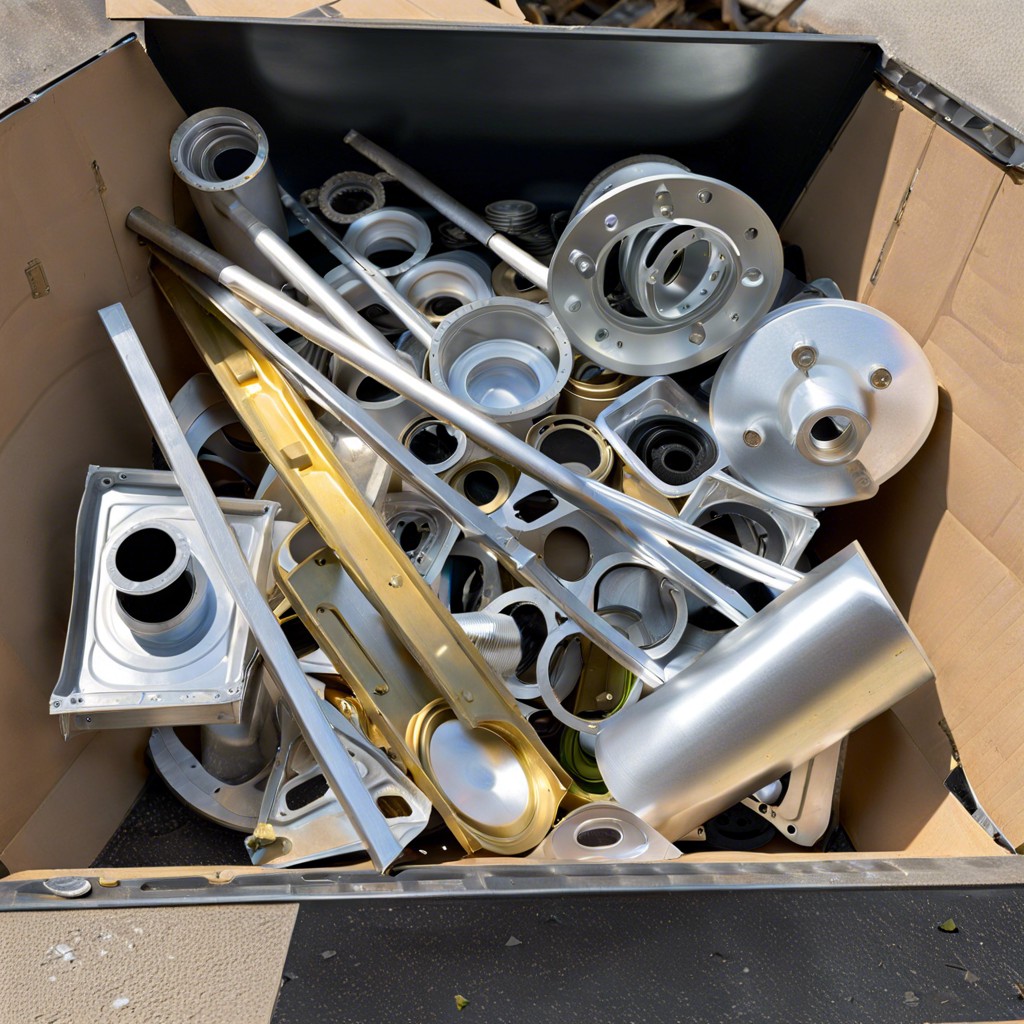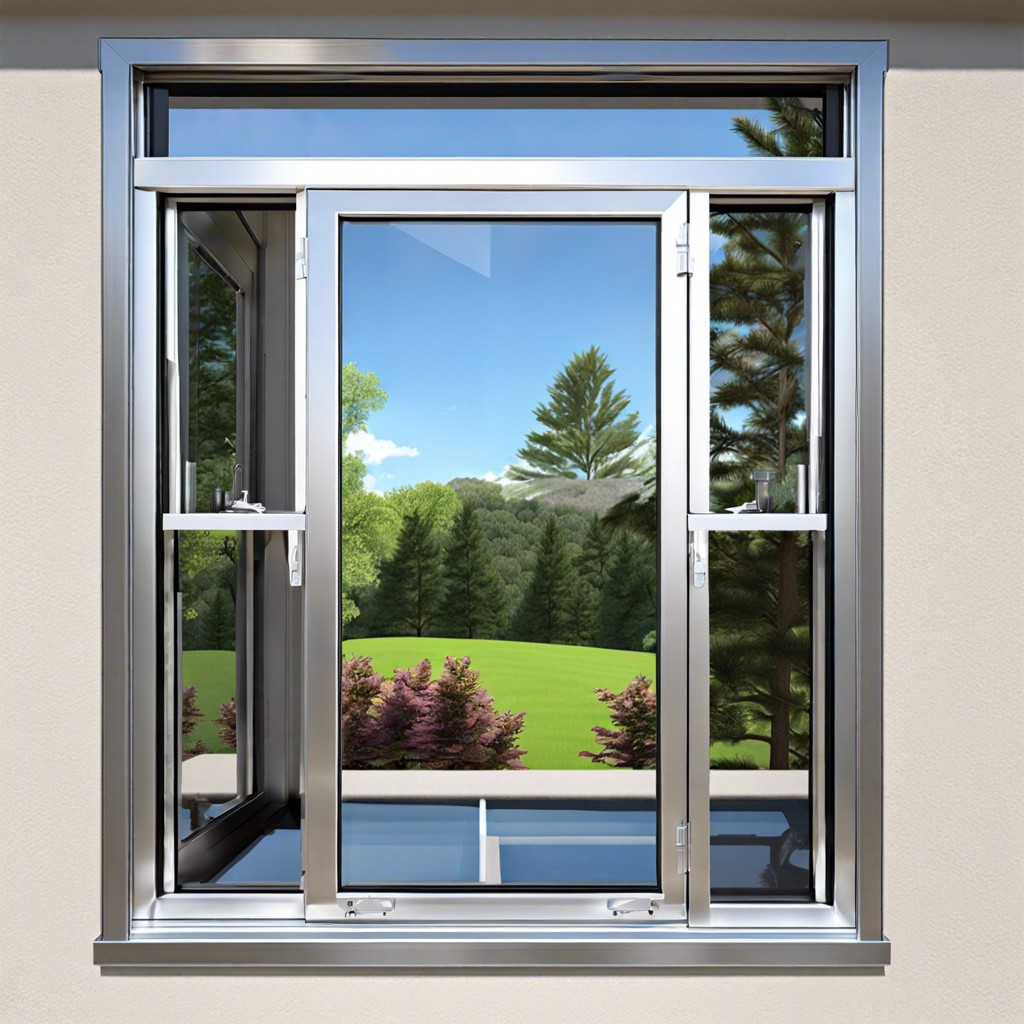Discover the most effective steps to clean your vinyl siding, ensuring it remains durable, vibrant and free from grime.
Key takeaways:
- Regular cleaning prevents vinyl siding from looking dull and aged.
- Use a soft cloth or soft brush, bucket, garden hose, vinyl siding cleaner, ladder, and protective equipment for cleaning supplies.
- Start by rinsing the siding with water, then apply a cleaning solution and scrub gently.
- Rinse thoroughly after cleaning each section to remove any residue.
- Choose an eco-friendly vinyl siding cleaner designed specifically for the job.
Why It’s Important to Clean Your Vinyl Siding

Maintaining the appearance and longevity of your home’s exterior is essential. Vinyl siding, in particular, can accumulate dirt, grime, and stains over time. Without regular cleaning, this build-up can cause the material to look dull and aged.
Moreover, mold and mildew can develop on the siding due to moisture, which not only affects the curb appeal but also potentially impacts the health of those residing in the home. Not to mention, neglected siding can attract pests like insects that may find their way into cracks and crevices.
Keeping your vinyl siding clean helps to protect your investment, prevent damage, and extend the life of the siding, ensuring your home continues to look its best year-round.
Supplies for Cleaning Vinyl Siding
Before diving into the task, gather the following items to ensure an efficient and effective cleaning process:
- Soft cloth or long-handled soft bristle brush: These tools help in applying the cleaning solution and gently scrubbing the siding to remove dirt without scratching the surface.
- Bucket: Used to mix your cleaning solution; ensure it’s large enough to dip your brush or cloth into easily.
- Garden hose with spray nozzle: A hose with a variable spray nozzle allows you to rinse off the cleaning solution thoroughly from the siding.
- Vinyl siding cleaner: Choose a cleaner suitable for vinyl; options include commercial vinyl siding cleaners, mild dish soap, or a mixture of 70% water and 30% white vinegar for a natural alternative.
- Ladder: For high areas, a stable ladder ensures you can safely reach all parts of the siding.
- Protective equipment: Gloves and goggles should be worn to protect your skin and eyes from cleaning solutions.
- Pressure washer (optional): For those preferring to use a pressure washer, select one that is appropriate for vinyl siding with adjustable settings to prevent damage.
Detailed Instructions for Cleaning Process
Begin by rinsing the siding with water to remove loose dirt, using a garden hose starting from the bottom and working your way up to prevent streaking.
Mix a cleaning solution of 70% water and 30% white vinegar for a natural, effective way to remove light mold and mildew stains. For more stubborn stains, opt for a non-abrasive, vinyl siding cleaner.
Apply the cleaning mixture using a soft-bristled brush, attaching it to a long handle for hard-to-reach areas. Start at the bottom, scrub gently in a side-to-side motion, and work in sections to prevent drying and streaking.
Rinse thoroughly after cleaning each section, ensuring no residue is left behind, which could attract more dirt.
Repeat this process until the entire siding is clean, being mindful of the weather, as direct sunlight can cause the solution to evaporate quickly.
Check for any remaining stains and touch up as needed using the same cleaning method.
Avoid using harsh chemicals or abrasive tools that can damage the vinyl. Additionally, be cautious around openings like windows and doors to prevent water infiltration.
Choosing the Best Vinyl Siding Cleaner
Selecting an appropriate cleaner ensures the longevity and aesthetics of your vinyl siding. Consider the following points:
- Eco-Friendly Solutions: Mildew and dirt don’t require harsh chemicals to remove. Look for eco-friendly options that are biodegradable and non-toxic, protecting both the environment and your landscaping.
- Specificity of Purpose: Choose cleaners designed specifically for vinyl siding. These formulations are created to both clean effectively and preserve the siding’s material integrity.
- Mildew and Mold Resistance: If your siding is prone to mold or mildew, opt for a cleaner with mold-inhibiting agents. This preventative approach keeps growth at bay and reduces the frequency of cleaning cycles.
- Strength and Concentration: Assess the level of dirt build-up. Heavily soiled areas may need a strong, concentrated cleaner whereas light dirt can be managed with a milder solution, which is often more economical as it covers more area when diluted.
- User Reviews and Recommendations: Look for products with positive feedback from users. Peer experiences can guide you towards cleaners that work effectively, reducing the trial-and-error process.
By considering these aspects, you select a cleaner that not only brightens your home’s exterior but also contributes to its caretaking.
How to Pressure Wash Vinyl Siding Without Warping It
Using a pressure washer can greatly expedite the cleaning process, but caution is crucial to prevent damage. Keep the pressure under 1,500 psi to ensure your siding remains unscathed.
Always use a fan tip nozzle, which disperses water evenly and lessens the force of impact. Position yourself at least a foot away from the siding and maintain this distance, spraying at a downward angle to prevent water from seeping behind the panels.
Avoid aiming directly at seams, edges, and any openings like vents or windows. Work in sections, moving systematically from top to bottom to prevent streaks. If you notice any warping, move the spray further away from the siding and reduce pressure if possible.
Regular checks for damage will help you adjust your technique and ensure a thorough clean without the risk of altering your siding’s shape.
FAQ
Should you pressure wash vinyl siding?
Yes, it is recommended to pressure wash vinyl siding once a year or once every two years, using other non-abrasive cleaning methods for seasonal cleanings.
Can you use Dawn dish soap to clean vinyl siding?
Yes, Dawn dish soap can be used effectively to clean vinyl siding.
How do you clean vinyl siding without a pressure washer?
To clean vinyl siding without a pressure washer, you can wet the siding area you’re focusing on with a garden hose, scrub it using a scrub brush dipped in a TSP/water mixture to remove grime and dirt, taking care to spray in a downward motion to prevent water seeping under the siding which could result in damage and rot.
What are the most effective green solutions for cleaning vinyl siding?
The most effective green solutions for cleaning vinyl siding are vinegar-water solution, an oxygen bleach solution, and a solution made from plant-based detergent and water.
When is the best time of year to clean vinyl siding to ensure longevity?
The best time of year to clean vinyl siding to ensure longevity is during the mild weather of spring or fall to prevent the warping or cracking that extreme temperatures can cause.
Does using vinegar pose any risk to the vinyl siding?
No, using vinegar does not pose any risk to the vinyl siding as it is a safe and effective cleaning agent.
Recap





